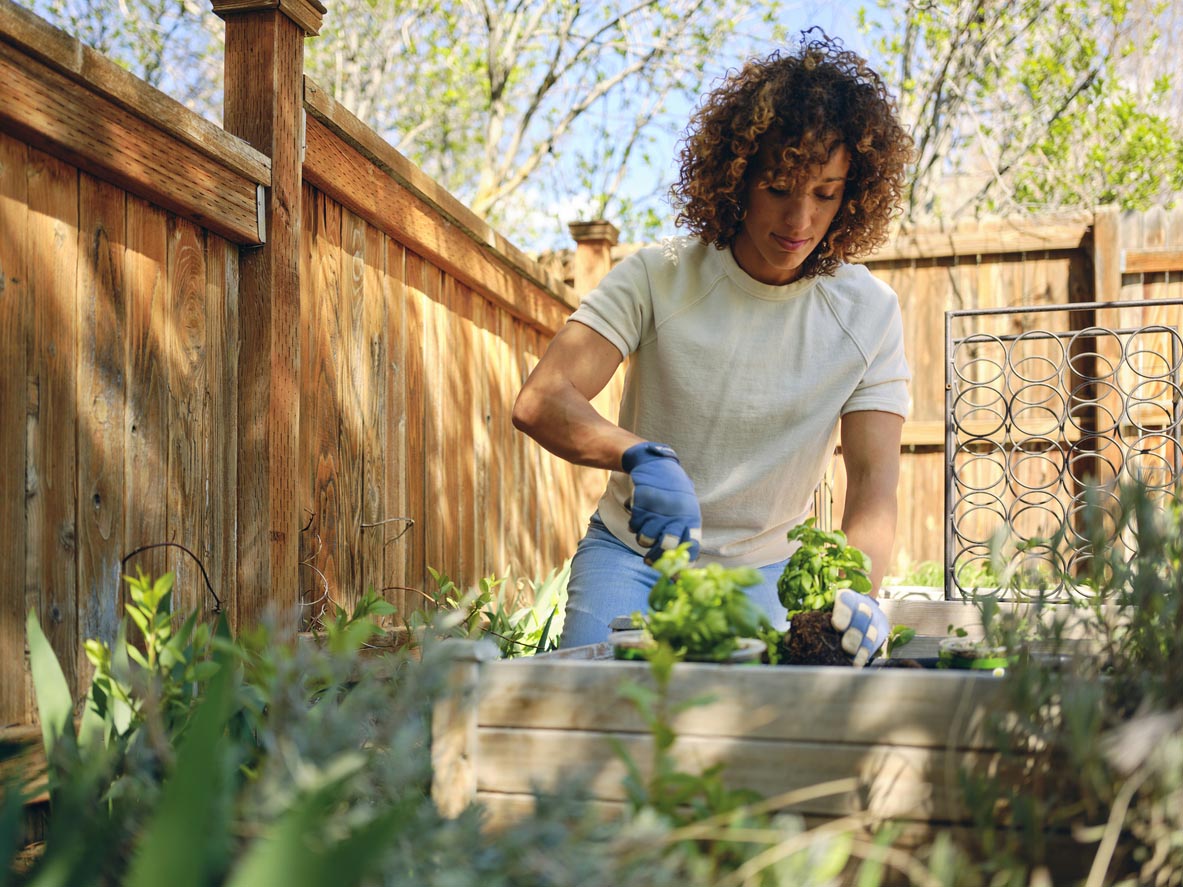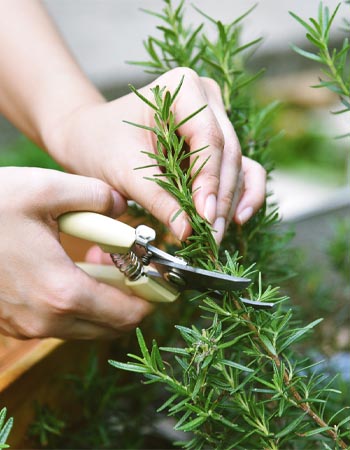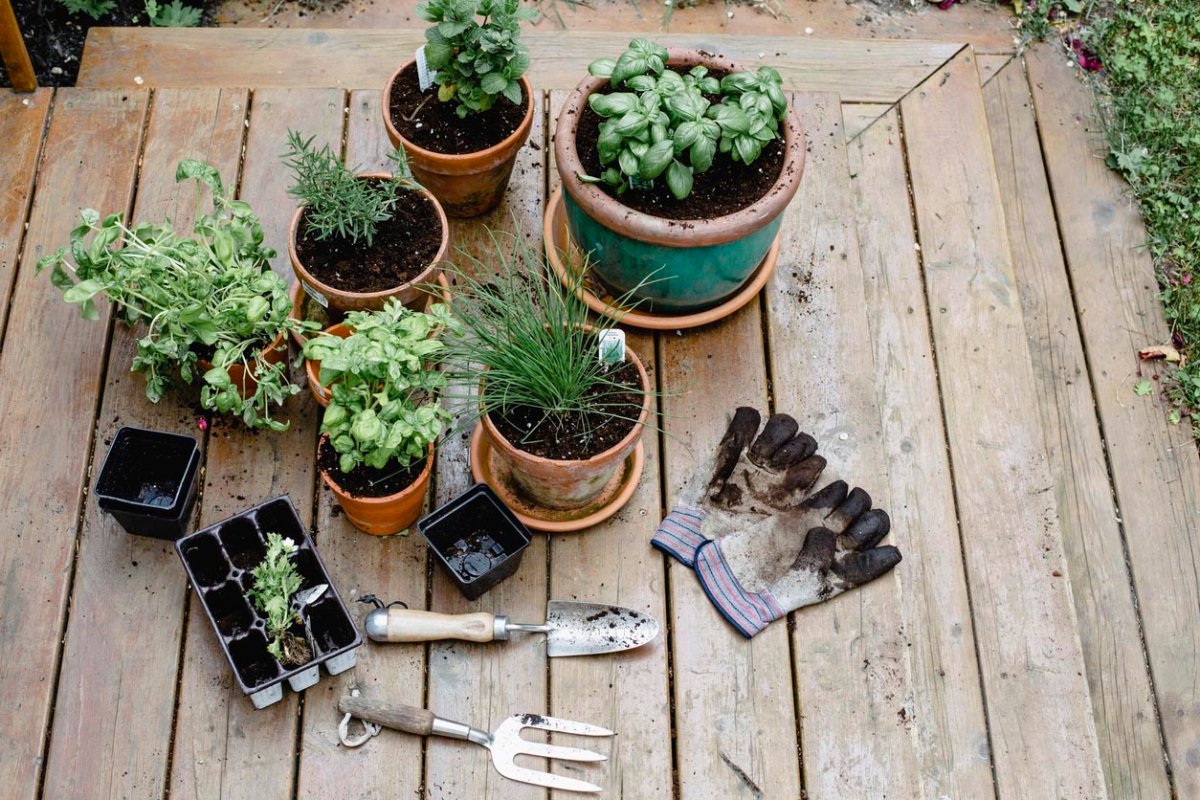

We may earn revenue from the products available on this page and participate in affiliate programs. Learn More ›

Want pro tips and advice straight from the source?
We’re tackling pest and wildlife control problems in June. Have a question? Let us know by filling out this form!
Welcome to Ask a Pro! Every month, we’ll take your questions about home improvement, DIY, lawn and garden, and homeownership and answer them with the help of professionals. Our experts are vetted and verified—and they’re eager to share their knowledge.
Last month, BobVila.com readers submitted lawn and garden questions on Facebook and Instagram, and via our newsletter. We hand-picked several to answer, then tapped two expert gardeners, Morgan Visalli and Deserae Lindsley, to help answer them. In this Ask a Pro column, Morgan and Deserae answer questions about herbs to plant, underrated crops for edible gardens, and low-maintenance plants you should consider.
Meet the Expert: Morgan Visalli, Certified Permaculture Designer; Grow With Mo on Instagram
Morgan Visalli of Grow With Mo is a sustainable garden designer and ecologist specializing in edible gardens, California native plants, and permaculture and regenerative design. As a Certified Permaculture Designer with over a decade of experience in organic gardening and land stewardship, she loves helping people grow food and compost, and to connect with nature in their own backyards.
Check out Morgan Visalli’s website and Instagram page.
Meet the Expert: Deserae Lindsley, Master Gardener; GardeningwithDezz on Instagram
Deserae Lindsley, or GardeningwithDezz, is a Master Gardener and gardening educator in Austin, Texas. Living on less than a quarter of an acre, she has a Certified Natural Wildlife habitat, vegetable garden, backyard chickens, and an extensive pollinator garden.
Check out Deserae Lindsley’s website and Instagram page.

- Want more lawn and garden advice? Sign up for our newsletters!
Are there any specific herbs we should be planting in spring? — @gisele_milan on Instagram
Morgan’s Advice: Spring is a perfect time to start or spruce up your herb garden. There are lots of herbs that are perennial in many climates, meaning that you plant them once and they will grow for multiple years. In warm climates, many perennial herbs will stay green and productive through the winter. In colder climates, they will die back once it gets cold and (hopefully!) resprout in the spring.
Some of these perennial herbs include thyme, rosemary, culinary sage, oregano, tarragon, and chives. Spring is a great time to plant these in the ground so that they have a long growing season to get established. Many of these perennial herbs can get large, so give them room to grow. Mint and lemon balm are two other perennial herbs that can be planted in the spring. However, these plants are known to spread rapidly and take over garden beds, so they are best planted in their own individual pots!
The other category of herbs are annual herbs, which are replanted every year. A must-have favorite annual herb to plant in the late spring (after any chance of frost has passed) is basil. There is nothing better than a fresh batch of homemade garden pesto, which can also be frozen as a way to preserve your basil harvest through the winter. There are many varieties of basil to choose from: sweet, Genovese, lemon, cinnamon, tulsi (great for a calming tea), purple, Thai, and more.
If you live in a cooler climate, spring is also the time to plant dill, parsley, and cilantro. In warmer climates, you may only have a short spring window to grow these, because once the weather gets hot, these herbs can “bolt” or start producing flowers and seeds. Although they may not produce as many edible leaves once they bolt, the flowers of these three herbs are fantastic for attracting beneficial insects like ladybugs and lacewings to your garden, so they’re worth planting.
Cilantro grows best if you plant seeds directly in the garden bed and continue planting more every few weeks throughout the spring. Most other herbs are planted once, and you can harvest from the plant all season long.
Deserae’s Advice: Basil, thyme, oregano, and rosemary are some of the easiest herbs to grow! Depending on your growing zone, some herbs (like oregano and rosemary) may perennialize in your garden. In cooler zones you may need to start your herbs inside ahead of your last frost date. Plant these herbs into the garden in spring or early summer after all risk of frost has passed.
- Looking for lawn care advice? Check out one lawn care pro’s tips on what to plant in shade, how to recover a lawn from road salt, and more.
What is the most underrated edible plant/vegetable/crop and why? — @le.french.fry on Instagram
Morgan’s Advice: In my opinion, one of the most underrated edible plants is the humble bean. Not only are beans very nutritious and versatile, eaten as either fresh green beans or dried beans, but they are also an important part of a healthy garden ecosystem. Beans have the incredible ability to produce free fertilizer for the garden. Nitrogen is one of the primary nutrients that plants need to grow—it is one of the main things you will find in a bag of fertilizer that you buy from the garden store. Beans are able to work with special soil bacteria to capture abundant nitrogen from the air and convert it into soil-based nitrogen. Beans are a great warm-season crop that are an important part of building healthy soil organically.
Deserae’s Advice: Being from the south I have to say okra! Okra is amazing and incredibly heat-tolerant. It grows to be a tall and towering plant that once starts producing doesn’t stop! As a member of the hibiscus family, it flowers daily. These gorgeous flowers last for 1 day and leave behind an edible seed pod. Once it reaches maturity, you have to keep your eye on it as seed pods longer than 3½ inches tend to be too tough to eat. Okra can be fried, pickled, and stewed. They’re incredible for gut health and are super easy to care for.

Looking for no-maintenance plants for flower beds in upstate New York, just south of Rochester. — Don, via the newsletter
Morgan’s Advice: An important part of having a “low-maintenance” garden involves picking the right plants for your specific climate and site characteristics. One of the first things I would recommend is looking up your USDA Plant Hardiness Zone. Go to the USDA Plant Hardiness Zone website, input your ZIP code, and it will tell you your zone. Most of the area around Rochester, New York, is Zone 6b. Knowing your zone will make it a lot easier for you to find plants that work with your climate.
Plant hardiness zones give us a good sense of what will grow well in our general climate, but we also need to look at specific site characteristics before selecting plants. So the next step I would recommend is observing the sunlight in your garden beds. Some flowers need “full sun” to produce big beautiful blooms, which means at least 6 hours of direct sunlight. Observe your flower beds over the course of a day, writing down what time they start to get sun and what time they enter shade. If your flower bed is located on the north side of a house, fence, or large tree, it is likely in part or full shade, which would require selecting shade-tolerant plants.
Once you know your zone and your sun conditions, you can easily search for things like “part-shade flower recommendations Zone 6b” and find options that will work well for your site.
Some full-sun flowering plants that you might consider for Zone 6b include Black-eyed Susan (Rudbeckia hirta), New England aster (Symphyotrichum novae-angliae), sedum (Sedum spp.), coreopsis (Coreopsis spp.), and blanket flower (Gaillardia).
Some plants that can handle partial shade include smooth blue aster (Symphyotrichum laeve), daylily (Hemerocallis), catmint (Nepeta), yarrow (Achillea millefolium), bee balm (Monarda), and coral bells (Heuchera).
I also encourage you to find plants that are native to your area, as these plants will be naturally adapted to the climate and will also provide important habitat for native pollinators and wildlife. The New York State Department of Environmental Conservation has some resources on native plant gardening that may be helpful for you.
Finally, I don’t know if I’ve ever met a truly “no-maintenance” plant, but these can certainly be “low maintenance”!
Some queries have been edited for clarity.
